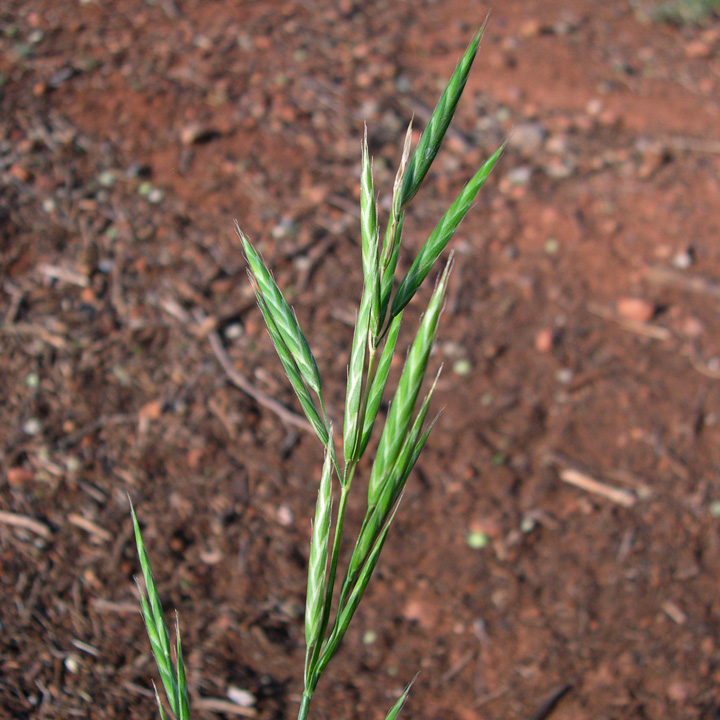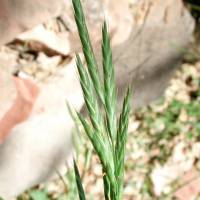|
|
 Seedheads Max Licher @http://swbiodiversity.org, Usage Rights: Creative Commons Attribution-ShareAlike (CC BY-SA) |  Spikelets Max Licher @http://swbiodiversity.org, Usage Rights: Creative Commons Attribution-ShareAlike (CC BY-SA) | | | | |
|
| | |
Origin: Native Season: Cool
Habitat Description: Dry open slopes; scrublands; woodland and forest openings. Moist woodlands and rocky slopes.
Plant Communities:Desert Scrub, Interior Chaparral, Semidesert Grasslands, Pinyon Juniper Woodland, Montane Conifer Forest, Riparian
Elevation: 3200 - 9500 feet
Desc:
Erect, loosely tufted, 2 to 4 feet tall, rhizomes absent.
Identification Notes: Sheaths retrorsely (directed downward or backward) pilose (bearing long, soft, straight hairs); lemmas usually evenly pubescent (short, soft hairs) on the back. Seedhead with stiff, erect or ascending branches; awns usually less than 1/4 inch long.
Grass Type: Perennial bunchgrass Rhizomes: N Stolons: N
Large Dense Clump (> 2 feet): N Bushy (highly branched): N
Height with Seedheads: Greater than 36 inches
Seedhead Structure: Branched - open and spreading Seedhead Droops: Y
Flowering Period: Mar - Jun
Number of Flowers per Spikelet: Multi-flowered Spikelets One-sided: N
Awns: Less than 1/4 inch Three Awns: N Awns Bent: N
Flower and Seedhead Notes: Seedhead erect and rather narrow to 8 inches long. Spikelets 1 to 2 inches long, 4 to 9 flowered, strongly laterally compressed. Glumes are unequal.
Blade Hairy:
Y
Blade with White Margins:
N
Blade Cross section:
Flat or involute
Blade Notes:
Blades 1/8 to 5/16 inches wide, 3 to 10 inches long, can be without hairs, with sparse long soft straight hairs, or covered with short soft hairs, on 1 or both surfaces. Sheaths are closed for most of their length.
Sheath Hairy:
Y
Tuft of Hairs at top of Sheath or Collar:
Y
Ligules:
Membranous
Auricles (Ear-like lobes at collar area:
N
Forage Value:
Important forage grass for domestic livestock, elk and deer.
|
|